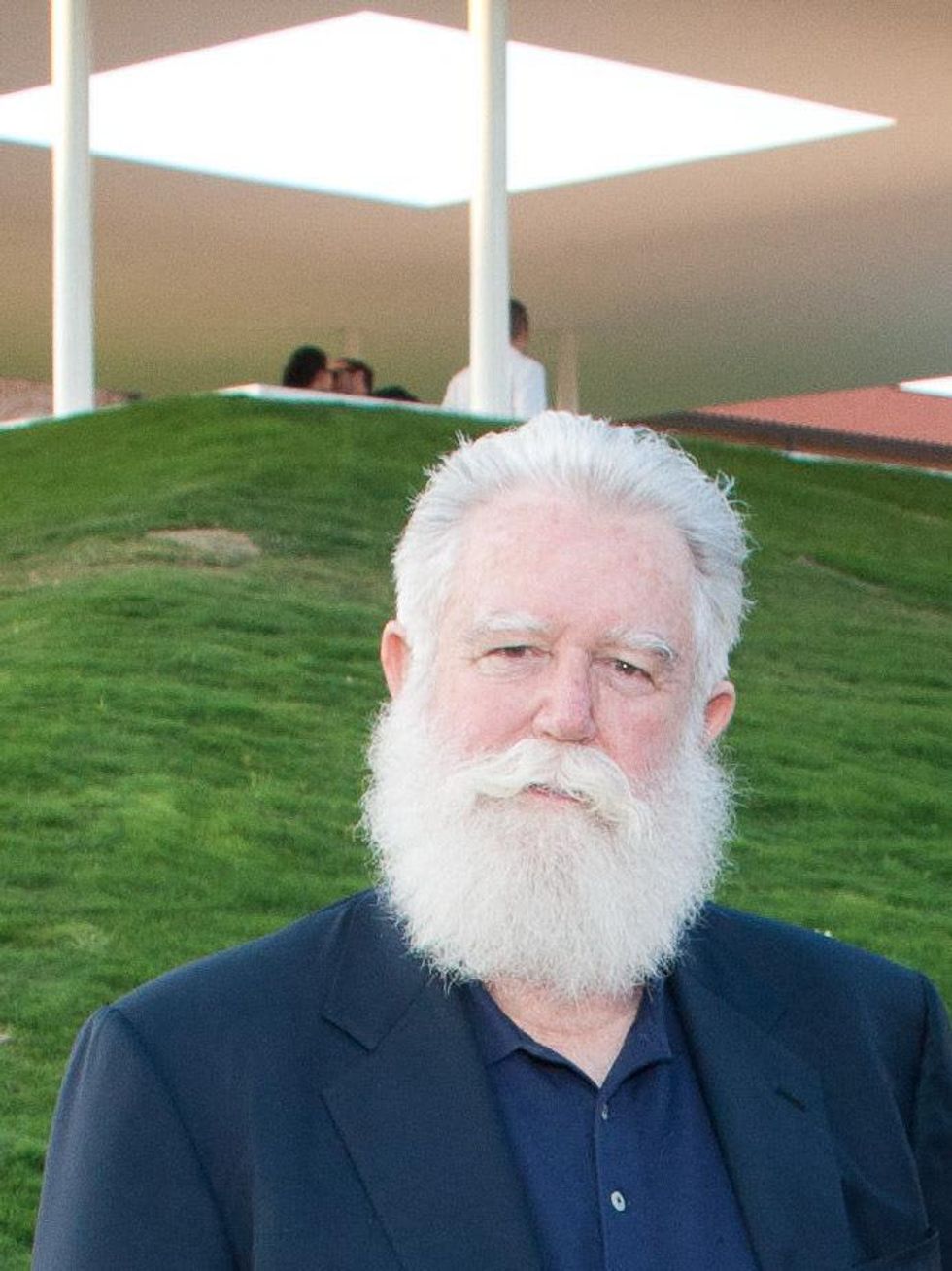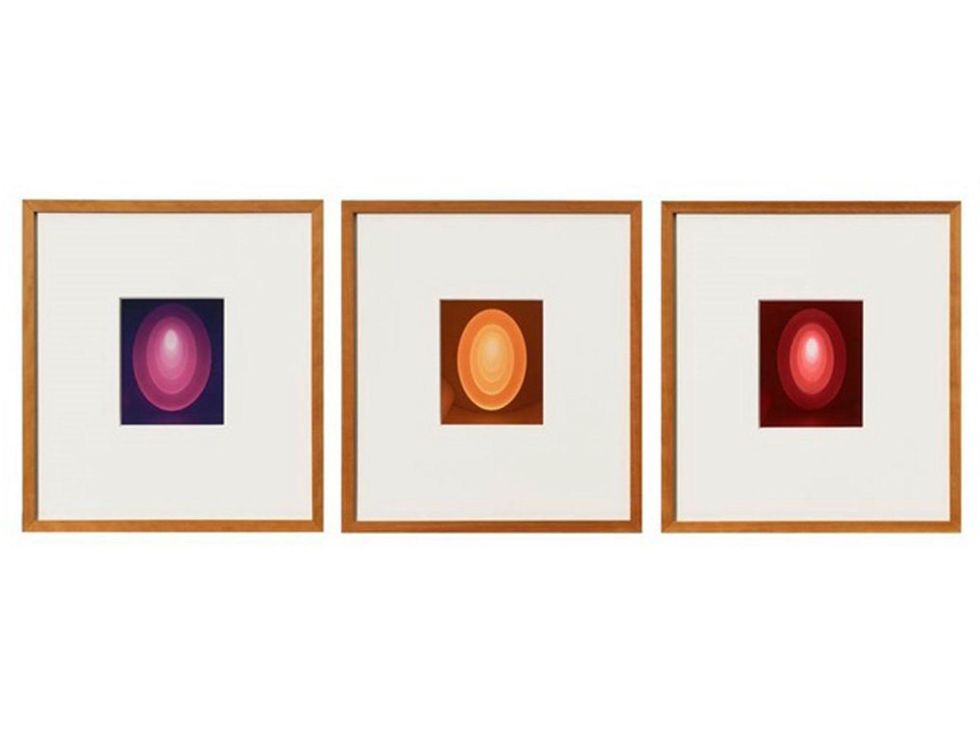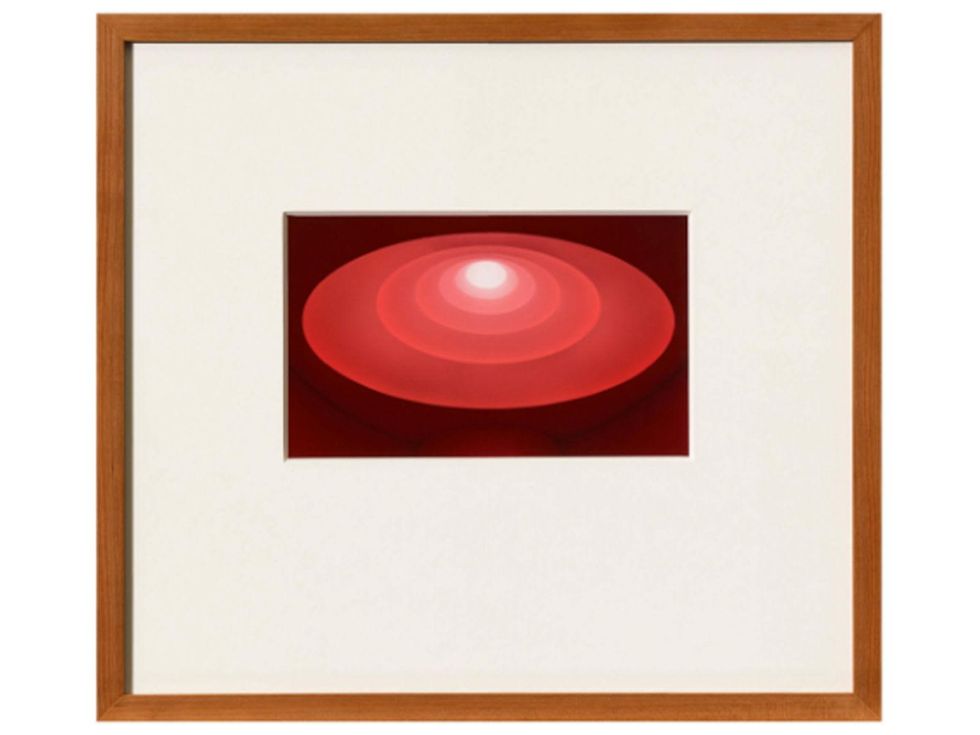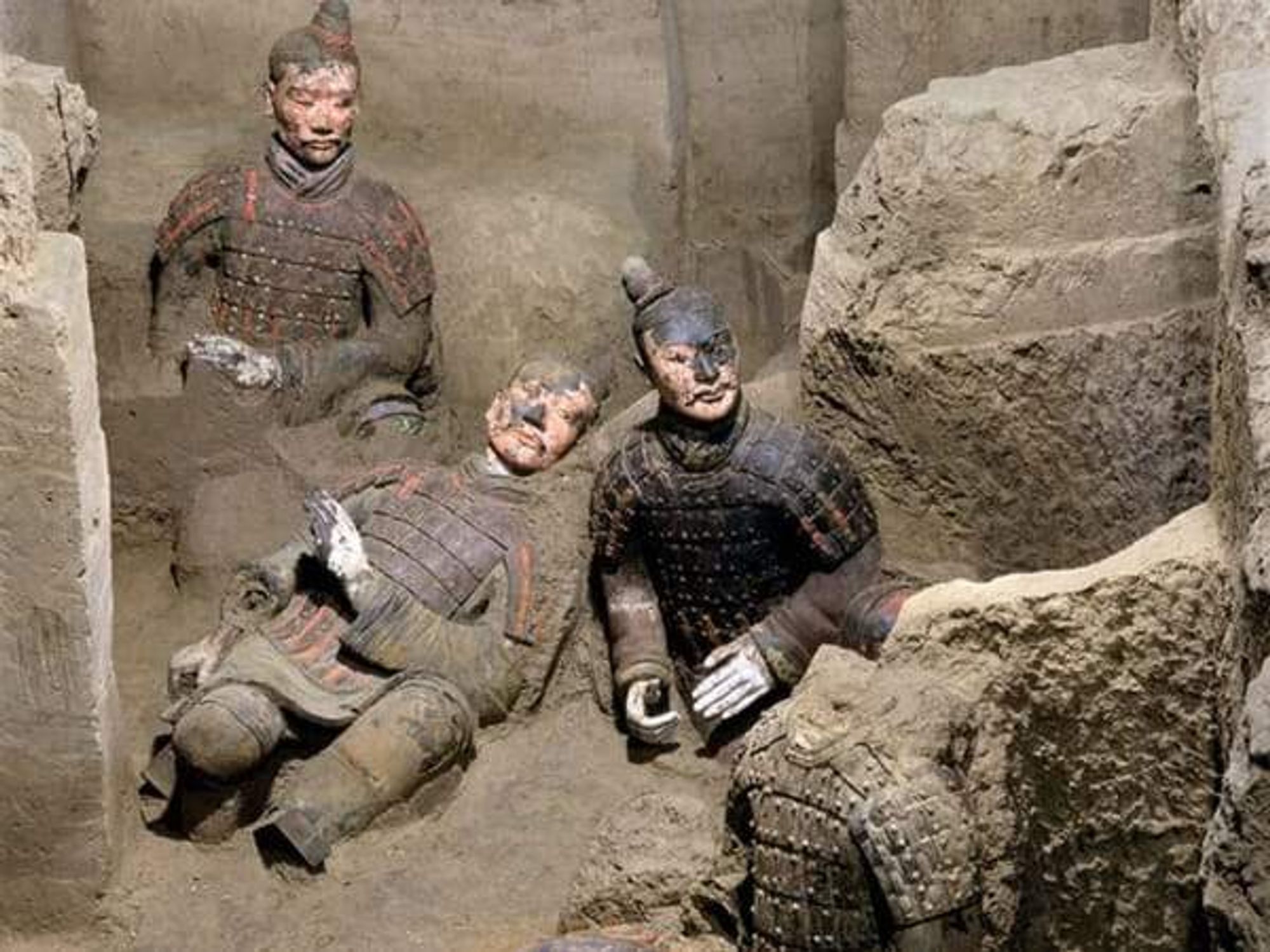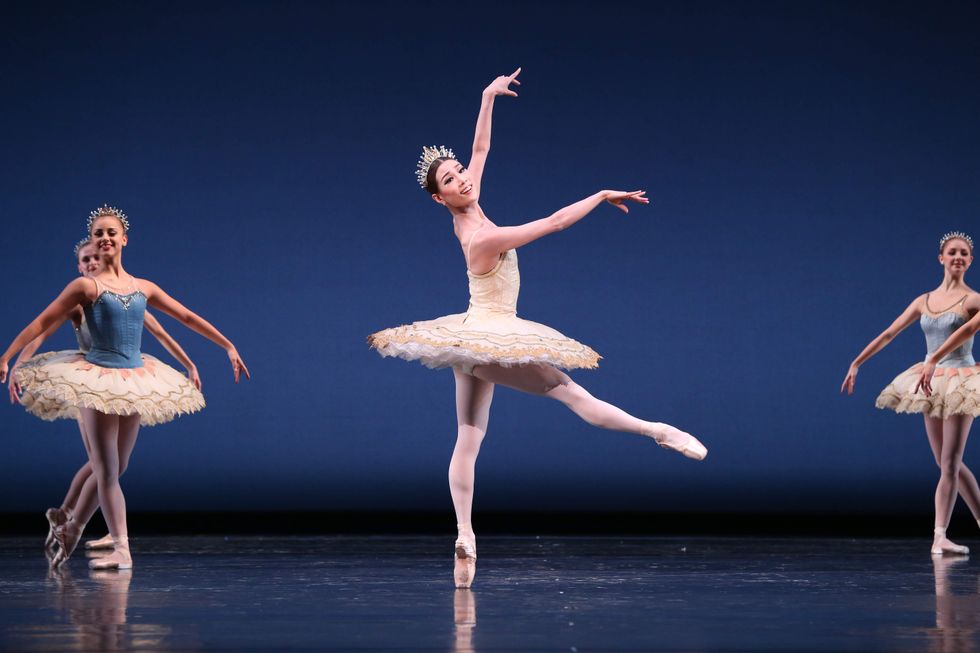Turrell Sees The Light
Acclaimed artist James Turrell explains how he sees the light in wide-ranging inteview
Attempting to conduct a interview with the master of light, James Turrell, is a bit like trying to capture sunlight in your hand. No matter how focused the questions, the answers are going to spill through your fingers illuminating everything else in the room.
Sailing, airport security, football and the simple joy of ordering vanilla ice cream with waffles — along with his art, of course — were among the subjects Turrell covered during a recent breakfast interview at the Houston Hilton-Americas. Turrell gained a titanium knee last year, which he lamented adds time going through security during his many travels to Europe and Asia for his commissions, but does make the 71-year-old more agile on his boat. Some of his recent excursions have been to Austin where has taken an interest in UT football while working on projects.
After the breadth of topics we touched on, I realized when we finally turned to his art and Turrell said he was always interested in the “full light spectrum,” he could as easily have said the full life spectrum.
After the breadth of topics we touched on, I realized when we turned to his art and Turrell said he was always interested in the “full light spectrum,” he could as easily have said the full life spectrum.
Turrell comes to Houston several times a year, and he's known this city so long that he still speaks fondly of the Oilers under Bum Phillips' reign. Last week, he was back for a Hiram Butler Gallery show of prints created from his Guggenheim installation, Aten Reign, one of the three major exhibitions of his work in 2013 including James Turrell: A Retrospective at the Los Angeles Country Museum of Art and The Museum of Fine Arts, Houston’s The Light Inside.
In profiles, he’s been described using Santa Claus imagery, no doubt because of the robust white beard. But if I’d never experienced Turrell’s work firsthand, or first eyes, at the Live Oak Friends Meeting House, The Light Inside tunnel at the MFAH or sat gazing in meditative surprise at the radical vision of the Houston sky framed by Twilight Epiphany at Rice, and just knew of his work through online images and Wikipedia, I might have a vastly different perspective on the man.
Let’s be honest, the Skyspaces spaced across the globe; the Perceptual Cells that enclose and then inundate individual viewers with blasts of light so strong they can see the interior of their own eyes; and most of all, his own private, extinct volcano that he’s been tunneling and carving for 40 years in order to shape nature’s most powerful force, light, to his will; all these “works” might seem less an indication of one of the most innovated artists in the world and more a description of the most awesome Bond villain ever.
But after talking with Turrell for an hour, I think I can safely judge that if he did manage to take over the world from his volcano lair, he’d probably just decree that we do away with Daylight Savings Time (“It’s like people who are always late so they set their watch 15 minutes ahead and they’re still late. So we can get up and move anytime we want but to change the clock is ridiculous because it has to do with the rotation of the Earth.”) and then leave us to our own devices, as long as we take time to contemplate the light.
A Rare Exhibition
While not unprecedented, a Turrell show of prints is somewhat unusual for an artist who found his medium early: “Basically I always work the light.”
So why attempt to distill distinct moments in a 60-minute light sequence that illuminated the interior of the Guggenheim into aquatint and woodcut relief printing?
Turrell acknowledged with a chuckle what he asks from collectors. “I need a place that’s larger than your living room, and maybe you should buy the property next door. If it doesn’t sell like hotcakes whose fault is it?”
One reason seems to be pragmatic. Turrell acknowledged with a chuckle what he asks from collectors. “I need a place that’s larger than your living room, and maybe you should buy the property next door. If it doesn’t sell like hotcakes whose fault is it?”
“I haven’t made the things that help give you access to my work, the normal things of art: prints, photos, drawings, things like that. Now I’m beginning to fill that out so you can a little bit more of a piece of me easily and not have to buy a big space,” Turrell explained, adding that the process of turning light into print has given him something as well. “It allowed me to believe in the traditions of art. I didn’t want the object. I didn’t want the painting or the sculpture. I wanted the light. That sort of ran against the traditions of art.”
When I saw the show a day before my meeting with Turrell these frozen images of light on paper, light for light’s own sake, felt very familiar, both cosmic and subatomic.
When I asked Turrell if my seeing a galaxy and atom in the same print seemed true to him, he launched us into tales of Tycho Brahe, Johannes Kepler and Turrell's own continuing relationship with the ellipse.
“Nature loves the ellipse. It’s a beautiful form and it’s something I’ve always enjoyed working with,” he described and then gave some insight into that great life-long work. “The [Roden] Crater is in the form of the ellipse. The top of it is not a circle. It’s actually slightly elliptical, and so I had to do a lot of work with ellipses in making something that looked natural in the form of a volcano.”
Light and Time
Bringing us back to the Hiram Butler exhibition, I had to ask about the arrangement of the prints which partially depict the color transformation in Aten Reign. Many of his installations, including The Light Inside, Twilight Epiphany and The Color Inside at UT Austin put viewers through a changing color spectrum, in a way bringing time into relationship with the light. I asked him if timing light within these Skyspaces creates a story.
“Well, it has a narrative. It does take you through that. This is not art without content. It’s without literal content, yes, but music also is without literal content.”
